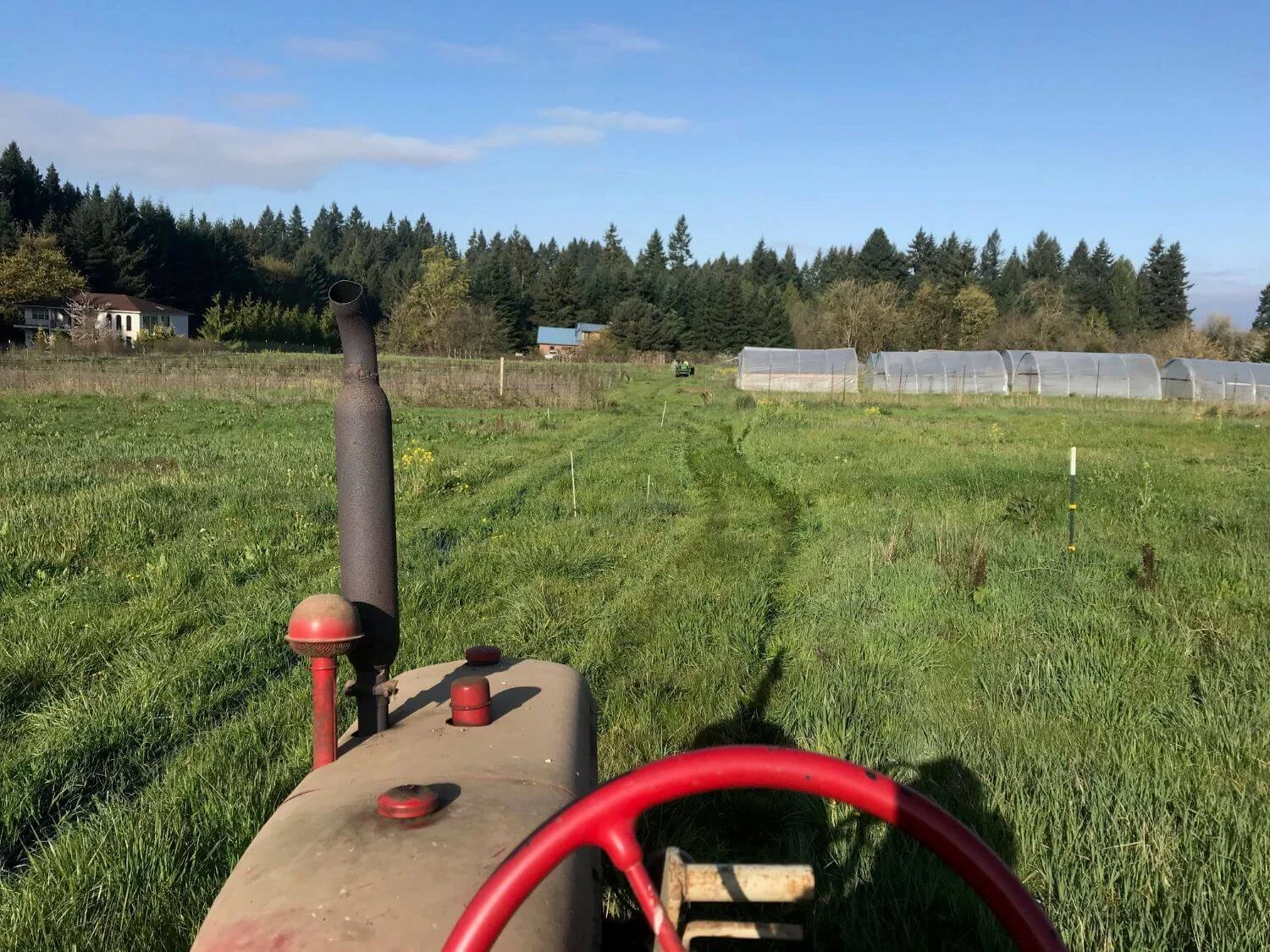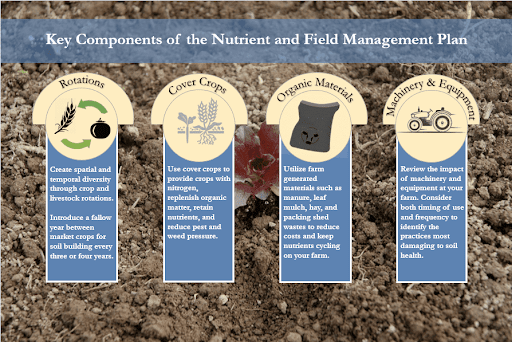Nutrient and Field Management Plan (NFMP) - An Overview of 4 Key Components
Organic farmers as a group are about as diversified as one can imagine which is why it’s crucial to create and implement a Nutrient and Field Management Plan (NFMP).
We all have a different land base, as well as unique personalities, philosophies, skill sets, and varying access to resources, tools and equipment. Consequently we employ different management practices when working with our land.
Despite these differences, organic farming is generally lauded for its environmental benefits,
But are there foundational practices that all highly skilled organic farmers-- regardless of their differences-- employ to care for their soil?
The Organic Center’s report Organic Farming Practices for Improving Soil Health summarizes this challenge:
Techniques used by organic farmers can help stop soil health degradation, or even restore soil health in previously degraded soils, because they replenish soil organic carbon and preserve underground biodiversity. However, the specific impacts of organic practices on soil health are not well understood. Broad surveys of soil health comparing organic and conventional systems consistently show the benefits of organic farming, but rarely compare strategies within organic systems to understand where these benefits arise, or how they can be maximized.
Most of us don’t have all the time, money, and resources to implement all the advanced land stewardship practices we’d like to.
And organic farmers typically all have building soil health as a primary goal, but where should our efforts be focused for maximum benefit?
The Soil Health Roadmap (SHR): A Systems Approach to Maximize Your Soil Building Strategies
The framework of the SHR is intentionally designed to approach the concept of soil health from many angles. You’ve set your goals, established a baseline, and understand how key nutrients are cycling through your soil.
Preparing your Nutrient and Field Management Plan (NFMP) allows you to focus specifically on the four major ways that we, as diversified organic farmers, impact soil health directly through our management practices.
The four sections of the NFMP are:
Rotations we employ to grow our market goods
Cover Crops we utilize to build soil health and address soil health challenges
Organic Materials we (and our animals) apply and remove from our fields
Machinery and Equipment that we use to work on our land
Organic soil health research has corroborated the SHR approach.
Several projects in recent years have focused on what we as organic farmers have in common.
These studies have reviewed and synthesized the variety of approaches from the lense of which farming practices most impact/improve soil health.
The Organic Farming Research Foundation’s Soil Health and Organic Farming series provides the following summary:
Since 2002, over 100 USDA funded organic agriculture research projects have addressed soil health and soil management (Schonbeck et al., 2016). Findings largely validate the four Natural Resources Conservation Service (NRCS) management principles for soil health (Kucera, 2015):
• Keep the soil covered as much as possible.
• Grow living roots throughout the year.
• Use diversity of plants to enhance soil microbial diversity.
• Manage more by disturbing soil less.
The central theme here is that living plants are the farmer’s primary soil health management tool.
Meanwhile, The Organic Center’s study findings established four key practices as being the most critical for impacting soil health:
Sound familiar?
While current research identifies the critical role these four aspects play in soil health, what’s less clear is how to take such concepts and create practical strategies that you can implement at your farm.
As Dwight Eisenhower wrote:
Farming looks mighty easy when your plow is a pencil and you're a thousand miles from the corn field.
That’s why creating a SHR for your operation is so important!
In the next four blog posts, we’ll dive deeper into Rotations, Cover Crops, Organic Amendments, and Equipment/Machinery.
We’ll summarize historic practices, think about current challenges and opportunities, and then describe how to craft appropriate recommendations uniquely suited to your farm.
Are you ready to dig in?
Let’s do it.



